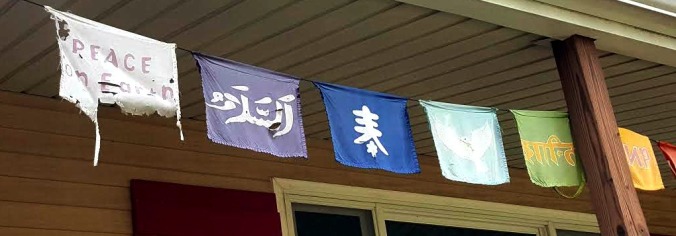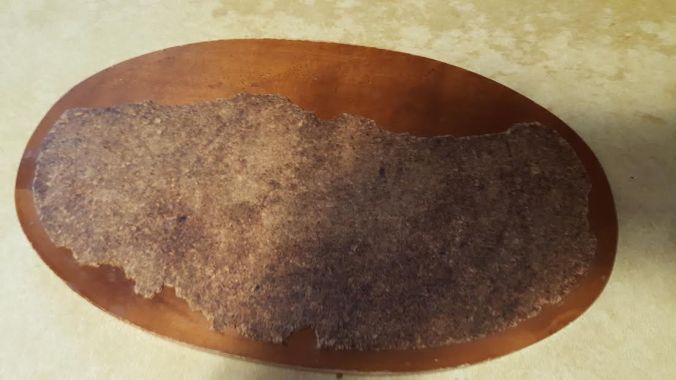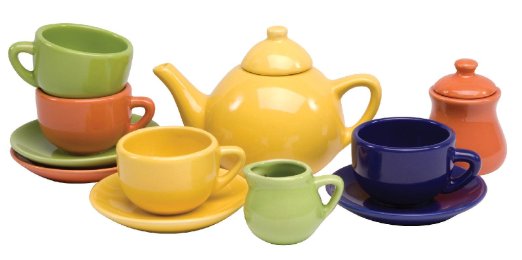
“The cure for boredom is curiosity. There is no cure for curiosity.” ~Dorothy Parker
Eight-year-old twins Caleb and Ella used to complain of boredom on a daily basis. “There’s nothing to do,” they’d whine. “I’m bored!”
Their father Mateo didn’t remember being bored when he was growing up. Back in the early 90’s he rode his bike wherever he needed to go. A favorite place he and other kids played was a small creek behind an apartment building. At home he liked to read comics or tinker with projects of his own devising (including a phase of making anti-burglar projects after watching Home Alone). He says he honed his daydreaming skills when he was bored in school. Being an inattentive student didn’t bring him the best grades, but he’s now an aspiring cartoonist who relies on daydreaming for ideas.

Their mother Camila said her childhood wasn’t boring either. She remembered lots of imaginative play with her sister while their mother worked a full-time job at home. The girls played for hours as spies, queens, and magicians. They also liked to play office, mimicking their mother’s phone calls and typing. Camila says her friends preferred playing at her house because they were allowed to hang sheets off a tree branch for an impromptu theater, bake cupcakes, even paint and repaint their old wooden play structure in the back yard.

“If I moped around my mother would say, ‘Go out and play.’ It wasn’t a suggestion, it was a command,” Mateo said. “Maybe that’s what made me so self-reliant.”
When Caleb and Ella complained of boredom their parents gestured to all the toys they owned and reminded their kids about sports practice and other activities. They urged their kids to go outside. But the kids tended to say, “There’s nothing I want to do!” and off they’d go to play a game on the tablet, watch the same movie again, or look for a snack.
Mateo and Camila wondered if they were unwittingly raising their kids to be bored. They worried the kids weren’t getting enough of that all-important free play. Let’s consider these possibilities.

Excessive Distractions
This may start early on. There are so many mobiles, play gyms, bouncy seats, swings, and toys marketed to new parents that we’re led to believe they’re necessary, even though babies need little more than loving connections with caregivers and a safe place to explore. Nature insures that the newest humans are perfectly cued to observe and interact with the world around them. A three-month-old lying near a window can amuse herself looking at patterns of sunlight, work on rolling over, and chew on a simple toy. She’s already busy learning exactly as she needs to learn. Few of us are raising infants in some tranquil Eden by any means. But we can avoid overstimulating them, distracting them, and breaking their concentration as they play.
Within a child’s first few years many of us accumulate a staggering overload of items, each one meant to amuse and educate our kids. Camila, who repeatedly tried to reorganize her kids’ toys, reported they had bins and shelves packed with toys but everything was always a mess. “Just to see how bad it was, I thought I’d count all their stuffed animals, large and small,” she said. “I gave up when I got to 100.”
Like so many other purchasing choices we make, quality matters more than quantity. For example, when toys are tied to specific movies or shows, kids are likely to reenact storylines but less likely to play creatively. They also play more passively with toys that make sounds, move, or otherwise perform. ” In contrast, open-ended playthings like blocks, dolls, a wagon, a ball, art supplies, and yes, a few generic stuffed animals, are far more likely to inspire imagination. Engaging fun happens when kids create their own projects, come up with their own games, and drift into their own make-believe worlds. A significant way to encourage this is the freedom to play with loose parts.
Parents (well, those who can afford it) know it’s easy to placate bored kids with a treat, toy, or digital playtime. But we don’t need to overdo it. We don’t want to teach them to depend on external stimulation instead of building strength essential for resilience and happiness at any stage in life — the ability to amuse themselves. Sure, every parent is going to distract and placate at times, but we need to keep from letting this become the go-to solution. We can build on a child’s capacity for self-directed play just by getting out of their way. This starts early on, in babyhood, as Janet Lansbury explains in “7 Myths That Discourage Independent Play” and there are all sorts of ways to encourage self-directed play as kids get older.

Top-Down Activities
The more we structure children’s time, the more we interfere with their own drive to learn, explore, imagine, and simply be. The inner motivation we want for our kids can be supplanted by external rewards like constant validation, a fix for every frustration, and bribes for good behavior. It’s possible to focus so intently on what we believe will make our children happy and successful that we forget children look to us as guides. They feel most secure when adults are grounded, consistent, and caring authority figures who trust that kids they’re growing up just fine as they are.
Many adults seem determined to keep kids busy. Unintentionally, this teaches children that fallow time is undesirable. Yet daydreaming, contemplation, even the uncomfortable condition we call “boredom” are necessary to incorporate higher level learning and to generate new ideas.
As psychologists Dorothy Singer and Jerome Singer write in The House of Make-Believe, children who have plenty of time for free play are more imaginative and creative, have more advanced social skills, and are actually happier as they play. The Singers contrast two children who are given free-form playthings like dolls or building blocks. The child who has had plenty of experience with daydreaming and make-believe is comfortable coming up with pretend scenarios, and can easily find inventive ways to play with these toys. The child who has not had much experience with make-believe or daydreaming may find little engaging about the toys after a short time —- in other words, he gets bored quickly. The imaginative “muscles” built by daydreaming, make-believe, and downtime simply haven’t developed.

Default Screens
Here we get to the dreaded “actions speak louder than words” thing. Kids see how we handle boredom. What are our go-to solutions? When we’re waiting in line do we take the opportunity to observe what’s around us, think our own thoughts, talk to each other? When we have a free evening do we do something that actually aligns with our interests —- test out a new recipe, read a book, practice the guitar, shoot hoops, relax on the porch doing nothing but relaxing? Or do we default to scrolling through our feeds, checking email, watching videos? I’m just as engaged with screens as the next person (and hey, there are a lot of important reasons to check our phones) so I’m not pointing fingers, but it helps to recognize that this is the first generation to grow up around such immersive technology and our example matters.
According to their parents, many days Caleb played online games for hours and Ella liked to watch the same movies over and over. There’s a great deal of variability in how screen time affects different children and there are enormous positives to be found in the offerings of today’s technology, but apparently not in a child’s earliest years.
Preliminary research indicates that exposure to more than two hours a day of screen time (even background screens) during infancy and toddlerhood is associated with a shorter attention span and more difficulty with self-regulation (the ability control one’s own behavior) as they get older. Pediatrician Dimitri Christakis believes that rapidly changing images on the screen precondition a young child’s mind to expect high levels of stimulation, making lower levels of stimulation such as those found in everyday life somewhat boring. (Dr. Christakis’ viewpoint is, at this point, remains largely conjecture.)
Older kids often use screens in more challenging and stimulating ways. Today’s electronics are far from the passive entertainment Ella and Caleb’s parents and grandparents grew up with. It is, however, a problem when sitting for hours on end replaces other more active, hands-on ways of being. Sometimes kids simply get out of the habit of doing other things. One study even found that older kids are bored during screen time but feel they don’t have other play options. Perhaps that’s because kids don’t have permission to do a variety of other things like make a mess, make noise, and get out of sight of adults —- sure signs that fun is happening.
Makers of toys, games, and movies expect boredom. They counteract this by ramping up conflict and violence to more effectively sustain attention. Makers of children’s programming, even children’s building sets, have resorted to increasingly violent themes to boost sales. Marketers certainly know how to use brain science to keep our kids’ dopamine levels surging.
We definitely get those dopamine hits when we play a video game or watch a movie. Nothing wrong with that. Our brains get the same rush of pleasure when we create, challenge ourselves, get active, socialize, figure out a problem. Remember that role model thing? Let’s remember to demonstrate to our kids that we enjoy our screens and get a kick out of non-screen living too. Maybe learn some new dance movies, fix something broken, make up a story, invent a new sandwich, ask Grandma to teach you something, wave to garbage collectors, or whatever playful idea strikes your fancy. Playfulness is contagious.

Two Kinds of Boredom
There’s a difference between a shut-down, numb mind and a fertile, constructively bored mind. Numbing boredom can set in when kids are stuck in a situation where they have very little control over their own activities. This is common in structured, physically restrictive settings — think school, religious services, long trips in the car, sitting through a sibling’s sports event. When numbing boredom happens too often or goes on too long, kids may learn passivity or learn to make trouble.
Constructive boredom is something else entirely. It’s a fertile state all its own. When kids sit on their nothing-to-do frustrations for a while, boredom can hatch into all sorts of possibilities. What kids invent when making their own fun invariably challenges them in myriad ways, often right to the edge of their next developmental milestones. What we don’t want to do is take over or supervise too closely, squashing boredom’s marvelous potential.
Boredom may feel uncomfortable, but it’s actually the tingle of imagination signaling of possibilities to explore. We can tell kids to say “yes” to boredom, letting it tug at them until they come up with an idea. When they do, we need to remember to say “yes” to as many of their ideas as we can, to accept the mess and uncertainty and noise that often accompanies kid-generated fun.
~~~~~

Camila and Mateo were frustrated by their children’s chronic boredom until a radical change was imposed on them. Mateo, who worked in building maintenance, lost his job when the company closed. His only income was a small cash flow from drawing comics and some side jobs as an illustrator. Camila taught several courses as an adjunct at a local college for low pay. Faced with a drastically reduced income, they talked to the kids and together prioritized holding on to their house and maintaining a close family.
This meant taking big steps to simplify. They stopped the kids’ lessons and sports. They dropped cable, leaving internet service with a data cap — which cut into Caleb’s gaming time and Ella’s movie time. They held a series of tag sales to raise money. The kids chose what toys to sell and kept the proceeds. (They turned their nearly empty closets into hideouts.)
Next they embarked on a project to bring in some income by converting their walk-out basement into a compact apartment to rent out. It was hard work, even harder to adjust to having another person living in their house at first, but the rent effectively paid most of their mortgage.

Mateo found another job three months later, yet they’re sticking with the changes made during the upheaval of unemployment. “No one wants to minimize because they’re forced to,” Mateo says, “but what we cut out helped.”
He sees all sorts of benefits. There’s no nagging about getting out the door for sports practice and games. Honing down their possessions cooled the pressure on everyone to clean up clutter and almost magically made their home feel more welcoming. Rehabbing the basement, Mateo believes, was the best thing of all. The kids felt good about helping out and still incorporate “fixing things” into their play. It’s like this was a reboot,” he says, “reminding us the four of us are in this together.”
Camila reports the kids are thriving. “They’re not perfect,” she says, “but there’s a lot less whining. I’m really impressed that they’re able to amuse themselves for hours on end.” That day while she graded papers, Caleb and Ella colored, pretended the stairs were a volcano, and made paper airplanes they threw off the porch. Then they conducted an ill-fated experiment to see if they could balance the recycling bin on their dad’s old skateboard. They could not, but they got an idea for another project as they cleaned up the spilled contents. Painful as simplifying was, it helped bored kids find ways to make their own fun.
The big takeaway from Caleb and Ella’s story, to me, doesn’t center on fewer structured activities, minimizing toys, or helping out around the house. It has to do with having time and freedom to play. Time? Hours each day. Freedom? Noise, mess, arguments, mistakes, space to play away from constant adult supervision. As Robert Coles said, “We all need empty hours in our lives or we will have no time to create or dream.”
Resources
“6 Ways to Encourage Free Play, Create Stronger Communities, & Raise Safer Kids”
“How Kids Benefit From Real Responsibilities”
“Playful Cures for a Toy Overload”
“Innovation Doesn’t Come in a Kit”
































